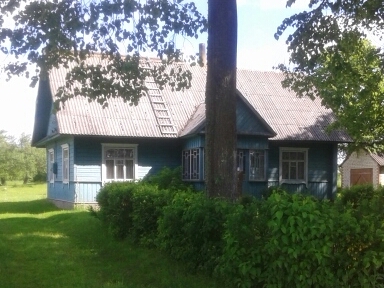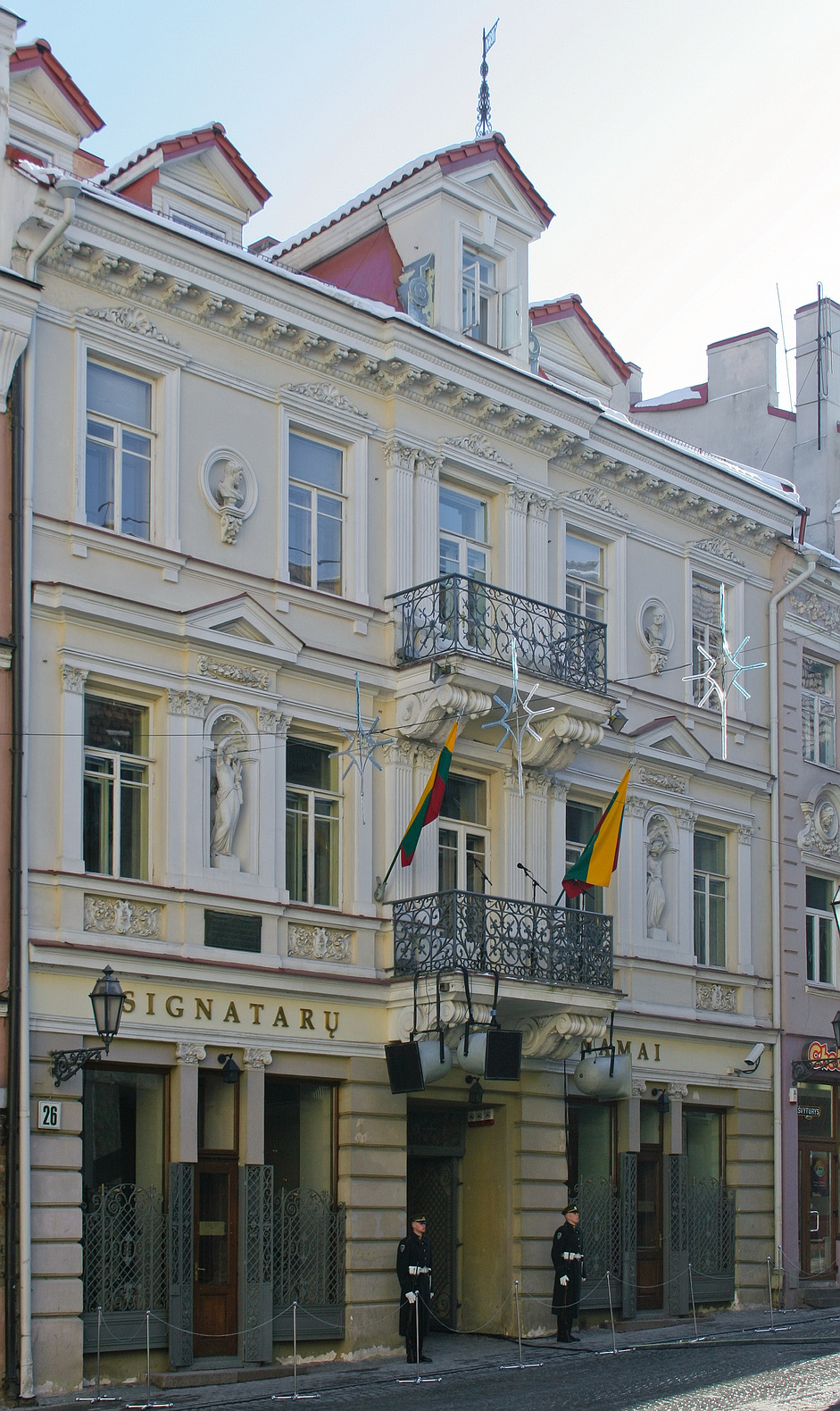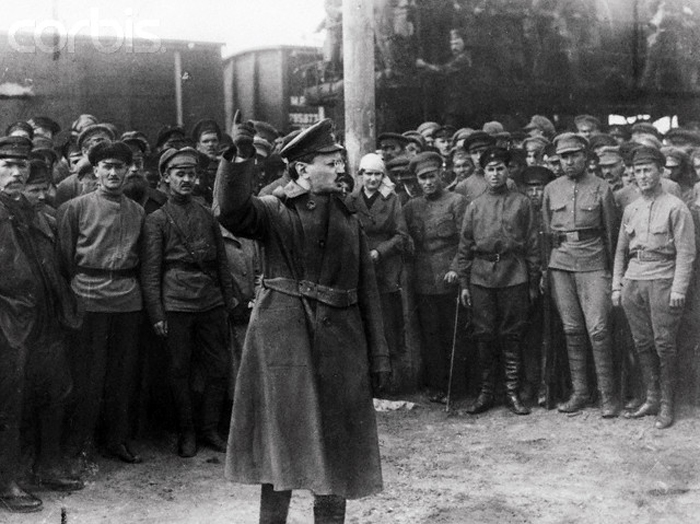|
Varniai Concentration Camp
Varniai concentration camp was an internment camp in Varniai, Lithuania. It was created a month after the coup d'état of December 1926 to house political prisoners, mostly members of the outlawed Communist Party of Lithuania. In total, more than 1,000 people passed through the camp before it was closed in 1931 due to financial difficulties brought by the Great Depression. Later, the authoritarian regime of Antanas Smetona operated two other internment camps, one in Dimitravas in 1936 and another in Pabradė in 1939. History In December 1926, Lithuanian military organized a coup to overthrow the democratically elected Lithuanian government of President Kazys Grinius and install Antanas Smetona and his Lithuanian Nationalist Union. The official rationale given by the military was that their actions had prevented an imminent Bolshevik coup, allegedly scheduled for 20 December. About 350 communists were arrested and four leaders (Karolis Požela, Juozas Greifenbergeris, Kazys G ... [...More Info...] [...Related Items...] OR: [Wikipedia] [Google] [Baidu] |
Samogitian Diocese Museum
The Samogitian Diocese Museum ( lt, Žemaičių vyskupystės muziejus) is a museum dedicated to the former Diocese of Samogitia (reorganized into the Diocese of Telšiai in 1926). Established in 1999, the museum is located in the building of the former Varniai Priest Seminary which was relocated to Kaunas after the failed Uprising of 1863. The museum is a branch of the based in Telšiai. History The Diocese of Samogitia was established when Christianization of Samogitia, Samogitia officially converted to Catholicism in 1417. The seat of the diocese was in Varniai sometimes also known as Medininkai. The Varniai Priest Seminary was established only in 1623 by Bishop Stanisław Kiszka (bishop), Stanisław Kiszka. Until 1743, the seminary shared premises with the Kražiai College. In 1770, a new brick building in the late Baroque architecture, Baroque style was built by Bishop . Motiejus Valančius, future bishop, began his studies at the seminary in 1822. From 1845 to 1850, he wa ... [...More Info...] [...Related Items...] OR: [Wikipedia] [Google] [Baidu] |
Varniai Priest Seminary
Kaunas Priest Seminary ( lt, Kauno kunigų seminarija) is the largest seminary in Lithuania serving the Roman Catholic Archdiocese of Kaunas. It is part of the Faculty of Theology of Vytautas Magnus University. Its current rector is Aurelijus Žukauskas. As of 2007, the seminary had 35 students. It traces its history to 1622. History The Diocese of Samogitia did not have its own school for priests. Therefore, Bishops of Samogitia sponsored students at the Jesuit Academy in Vilnius, which was established in 1570. In 1622, Bishop Stanisław Kiszka decided to sponsor a separate seminary in Varniai, the seat of the diocese. In 1628, the seminary moved to Kražiai where it shared premises with the Jesuit Kražiai College until 1745. Bishop decided to move the seminary back to Varniai. There he built a brick house dedicated to the seminary's needs. From 1850 to 1862, 333 men were ordained as priests. In 1862, the seminary had 120 students. After the January Uprising of 1863, the ... [...More Info...] [...Related Items...] OR: [Wikipedia] [Google] [Baidu] |
League Of Nations
The League of Nations (french: link=no, Société des Nations ) was the first worldwide Intergovernmental organization, intergovernmental organisation whose principal mission was to maintain world peace. It was founded on 10 January 1920 by the Paris Peace Conference (1919–1920), Paris Peace Conference that ended the World War I, First World War. The main organization ceased operations on 20 April 1946 but many of its components were relocated into the new United Nations. The League's primary goals were stated in Covenant of the League of Nations, its Covenant. They included preventing wars through collective security and Arms control, disarmament and settling international disputes through negotiation and arbitration. Its other concerns included labour conditions, just treatment of native inhabitants, Human trafficking, human and Illegal drug trade, drug trafficking, the arms trade, global health, prisoners of war, and protection of minorities in Europe. The Covenant of th ... [...More Info...] [...Related Items...] OR: [Wikipedia] [Google] [Baidu] |
Augustinas Voldemaras
Augustinas Voldemaras (16 April 1883 – 16 May 1942) was a Lithuanian nationalist political figure. He briefly served as the country's first prime minister in 1918 and continued serving as the minister of foreign affairs until 1920, representing the fledgling Lithuanian state at the Versailles Peace Conference and the League of Nations. After some time in academia, Voldemaras returned to politics in 1926, when he was elected to the Third Seimas. Dissatisfied with the left-wing government of President Kazys Grinius, Voldemaras and fellow nationalist Antanas Smetona supported the military coup d'état in December 1926 and he was appointed as the prime minister for a second time. A brilliant orator, Voldemaras represented the radical wing of the Lithuanian Nationalist Union that was increasingly critical of the more moderate policies of President Smetona. Smetona had Voldemaras removed from office in September 1929 and exiled to Zarasai. Voldemaras was arrested in 1934 after t ... [...More Info...] [...Related Items...] OR: [Wikipedia] [Google] [Baidu] |
Lithuanian Education Society Rytas
The Lithuanian Education Society Rytas ( lt, Lietuvių švietimo draugija „Rytas“; "rytas" means ''morning'' or ''dawn'') was a Roman Catholic society fostering education in the Lithuanian language mostly in the Vilnius Region, then fiercely contested between Lithuania and the Second Polish Republic, now split between Lithuanian and Belarus. Established in 1913, the society maintained some 100 primary schools (mostly one-room schools), 50 evening classes, Vytautas the Great Gymnasium and Teacher's Seminary in Vilnius (Wilno, Vilna) in 1927. Due to political tensions between Poland and Lithuania as well as wider Polonization policies, Rytas faced increasing difficulties and restrictions in maintaining its schools. Similar situation existed with Polish schools in Lithuania (see Lithuanization). The situation continued to worsen as both sides increased restrictions in retribution. As schools were closed, Rytas shifted its focus to maintaining community reading rooms. After t ... [...More Info...] [...Related Items...] OR: [Wikipedia] [Google] [Baidu] |
Klaipėda Region
The Klaipėda Region ( lt, Klaipėdos kraštas) or Memel Territory (german: Memelland or ''Memelgebiet'') was defined by the 1919 Treaty of Versailles in 1920 and refers to the northernmost part of the German province of East Prussia, when as Memelland it was put under the administration of the Entente's Council of Ambassadors. The Memel Territory, together with other areas severed from Germany (the Saar and Danzig) was to remain under the control of the League of Nations until a future day when the people of these regions would be allowed to vote on whether the land would return to Germany or not. Today, the former Memel Territory is controlled by Lithuania as part of Klaipėda and Tauragė counties. Historical overview In 1226 Duke Konrad I of Masovia requested assistance against the Prussians and other Baltic tribes, including the Skalvians who lived along the Neman (Memel) River. In March 1226, Holy Roman Emperor Frederick II issued the Golden Bull of Rimini, wh ... [...More Info...] [...Related Items...] OR: [Wikipedia] [Google] [Baidu] |
Vilnius
Vilnius ( , ; see also other names) is the capital and largest city of Lithuania, with a population of 592,389 (according to the state register) or 625,107 (according to the municipality of Vilnius). The population of Vilnius's functional urban area, which stretches beyond the city limits, is estimated at 718,507 (as of 2020), while according to the Vilnius territorial health insurance fund, there were 753,875 permanent inhabitants as of November 2022 in Vilnius city and Vilnius district municipalities combined. Vilnius is situated in southeastern Lithuania and is the second-largest city in the Baltic states, but according to the Bank of Latvia is expected to become the largest before 2025. It is the seat of Lithuania's national government and the Vilnius District Municipality. Vilnius is known for the architecture in its Old Town, declared a UNESCO World Heritage Site in 1994. The city was noted for its multicultural population already in the time of the Polish–Li ... [...More Info...] [...Related Items...] OR: [Wikipedia] [Google] [Baidu] |
Vilnius Region
Vilnius Region is the territory in present-day Lithuania and Belarus that was originally inhabited by ethnic Baltic tribes and was a part of Lithuania proper, but came under East Slavic and Polish cultural influences over time. The territory included Vilnius, the historical capital of the Grand Duchy of Lithuania. Lithuania, after declaring independence from the Russian Empire, claimed the Vilnius Region based on this historical legacy. Poland argued for the right of self-determination of the local Polish-speaking population. As a result, throughout the interwar period the control over the area was disputed between Poland and Lithuania. The Soviet Union recognized it as part of Lithuania in the Soviet-Lithuanian Treaty of 1920, but in 1920 it was seized by Poland and became part of the short-lived puppet state of Central Lithuania, and was subsequently incorporated into the Second Polish Republic. Direct military conflicts (Polish–Lithuanian War and Żeligowski's Mutiny) ... [...More Info...] [...Related Items...] OR: [Wikipedia] [Google] [Baidu] |
Marxism–Leninism
Marxism–Leninism is a List of communist ideologies, communist ideology which was the main communist movement throughout the 20th century. Developed by the Bolsheviks, it was the state ideology of the Soviet Union, its Soviet satellite states, satellite states in the Eastern Bloc, and various countries in the Non-Aligned Movement and Third World during the Cold War, as well as the Communist International after Bolshevisation. Today, Marxism–Leninism is the ideology of the ruling parties of Chinese Communist Party, China, Communist Party of Cuba, Cuba, Lao People's Revolutionary Party, Laos and Communist Party of Vietnam, Vietnam (all One-party state, one-party 'socialist republics'), as well as many List of communist parties, other communist parties, while Juche, the state ideology of North Korea is derived from Marxism–Leninism. Marxist–Leninist states are commonly referred to as "communist states" by Western academics. Marxism–Leninism holds that a Two-stage theory, ... [...More Info...] [...Related Items...] OR: [Wikipedia] [Google] [Baidu] |
Petras Karvelis
Petras ( el, Πετράς) is the archaeological site of an ancient Minoan town on northeastern Crete. Geography Petras is just east of the modern Cretan town, Siteia. The site is situated on top of a small plateau and overlooks the sea north of Crete. Archaeology Metaxia Tsipopoulou began excavations at Petras in 1985. The main building, which was two stories when it stood, is 2800 square meters. Petras has a drainage system, double staircases, dadoes, frescoes and cut slab pavements. Marks appear on the architecture of double axes, stars, branches, double triangles and Linear A signs. Petras has yielded 3 Linear A tablets from its archives, plus a few other short Linear A texts.Metaxia TsipopoulouThe Minoan Palace at Petras, Siteia. Athena Review, Vol.3, no.3. 2003 Hieroglyphic archive A hieroglyphic archive inscribed in Cretan hieroglyphs Cretan hieroglyphs are a hieroglyphic writing system used in early Bronze Age Crete, during the Minoan era. They predate ... [...More Info...] [...Related Items...] OR: [Wikipedia] [Google] [Baidu] |
Lithuanian Riflemen
The Lithuanian Riflemen's Union (LRU, lt, Lietuvos šaulių sąjunga), also referred to as Šauliai ( lt, šaulys for ''rifleman''), is a paramilitary non-profit organisation supported by the State. The activities are in three main areas: military training, sport, and culture. History Establishment The Lithuanian Riflemen's Union was established in Kaunas on 27 June 1919 as a shooting section within the Lithuanian Sport Union. Several historic events determined the establishment of the Union – Lithuania had just declared independence and was asserting it in the wars against the Bolshevik Red Army, the Western Russian Volunteer Army and the young Polish Armed Forces. Vladas Putvinskis and Matas Šalčius were the most important activists behind the idea to form a Union, and Putvinskis became the first Commander of the LRU and its main ideologue. Both of them came up with the idea to form a paramilitary group at almost the same time, but the scope that they envisioned was diff ... [...More Info...] [...Related Items...] OR: [Wikipedia] [Google] [Baidu] |
Inmates In Varniai Concentration Camp
The Inmates are a British pub rock band, which formed after the split of The Flying Tigers in 1977. In 1982, they had a medium-sized international hit with a cover of The Standells' "Dirty Water", and a UK Top 40 hit with their cover of Jimmy McCracklin's track, " The Walk". "Dirty Water" reached number 51 in the United States in January 1980. The song led directly to them recording their debut album, ''First Offence'', produced by Vic Maile for Radar Records. Two further albums were quickly recorded; ''Shot in the Dark'' again produced by Vic Maile, and ''Heatwave in Alaska'' produced by Stuart Coleman. Around 1981, lead singer Bill Hurley became ill following a breakdown, and his place was taken for some time by Barrie Masters, who had recently split with Eddie and the Hot Rods. The Inmates continued to record (''True Live Stories'', a live album recorded by Vic Maile at London's the Venue nightclub and, ''Five'', a studio album again produced by Maile) and tour with Masters ... [...More Info...] [...Related Items...] OR: [Wikipedia] [Google] [Baidu] |










